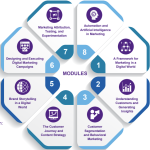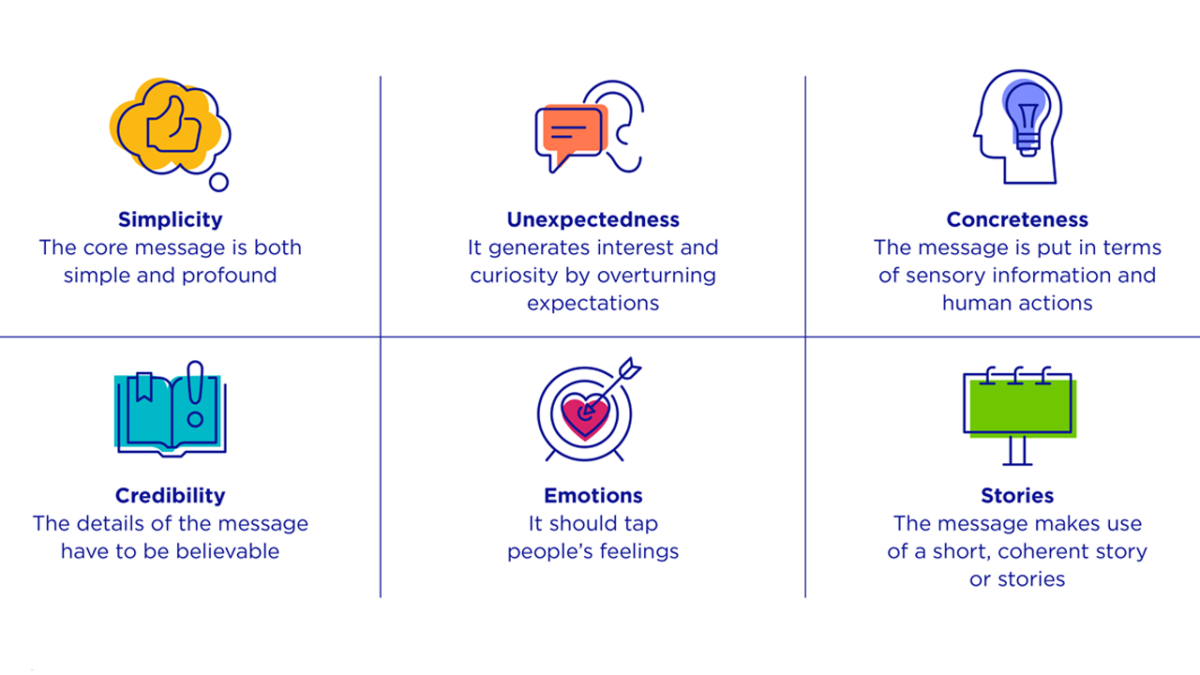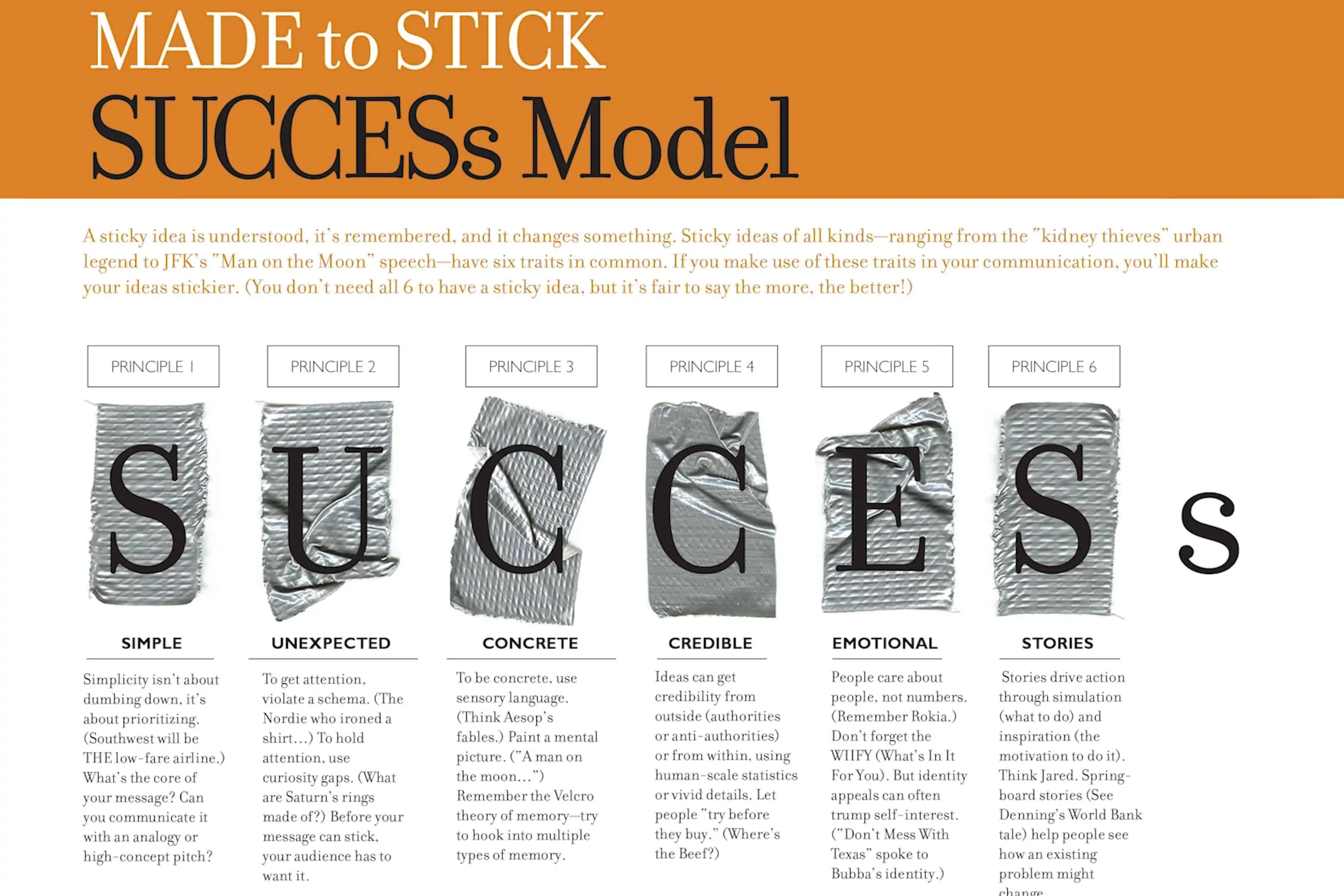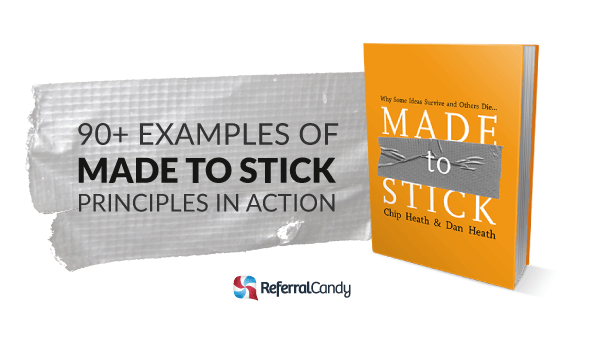In today’s fast-paced world, capturing attention and making ideas memorable is more important than ever. The principles outlined in Made to Stick by Chip and Dan Heath provide a powerful framework for creating messages that resonate and endure. From advertising campaigns to political speeches, these principles—simplicity, unexpectedness, concreteness, credibility, emotions, and stories—have been applied across countless real-world scenarios. This article explores 90 compelling examples that demonstrate how these principles work in practice. Whether you’re a marketer, educator, or leader, these examples will inspire you to craft ideas that stick, leaving a lasting impact on your audience.
90 Real-World Examples of Made to Stick Principles
The principles outlined in the book Made to Stick by Chip Heath and Dan Heath have been widely applied across various industries to create memorable and impactful messages. These principles—Simplicity, Unexpectedness, Concreteness, Credibility, Emotions, and Stories—are not just theoretical concepts but have been successfully implemented in real-world scenarios. Below, we explore five key areas where these principles have been effectively utilized, along with examples and a detailed table summarizing their applications.
See Also 90 Real-World Examples of Made to Stick Principles
90 Real-World Examples of Made to Stick Principles1. Simplicity in Advertising Campaigns
Simplicity is about stripping an idea down to its core, making it easy to understand and remember. In advertising, this principle is often used to create slogans or taglines that resonate with audiences. For example, Nike's Just Do It is a simple yet powerful message that encapsulates the brand's ethos. Another example is Apple's Think Different, which communicates innovation and creativity in just two words. These campaigns demonstrate how simplicity can make a message stick.
| Brand | Campaign | Principle Applied |
|---|---|---|
| Nike | Just Do It | Simplicity |
| Apple | Think Different | Simplicity |
2. Unexpectedness in Public Service Announcements
Unexpectedness grabs attention by breaking patterns or defying expectations. Public service announcements (PSAs) often use this principle to shock or surprise viewers into paying attention. For instance, the Dumb Ways to Die campaign by Metro Trains in Melbourne used dark humor and unexpected scenarios to promote railway safety. Similarly, the This Is Your Brain on Drugs campaign used a surprising visual metaphor to convey the dangers of drug abuse.
See Also 90 Real-World Examples of Made to Stick Principles
90 Real-World Examples of Made to Stick Principles| Campaign | Organization | Principle Applied |
|---|---|---|
| Dumb Ways to Die | Metro Trains | Unexpectedness |
| This Is Your Brain on Drugs | Partnership for a Drug-Free America | Unexpectedness |
3. Concreteness in Educational Programs
Concreteness involves using specific, tangible examples to make abstract ideas more relatable. Educational programs often employ this principle to help students grasp complex concepts. For example, the Hands-On Science programs use physical experiments to teach scientific principles, making them easier to understand. Another example is the use of real-world case studies in business schools to illustrate theoretical concepts.
| Program | Institution | Principle Applied |
|---|---|---|
| Hands-On Science | Various Schools | Concreteness |
| Case Study Method | Harvard Business School | Concreteness |
4. Credibility in Health Campaigns
Credibility ensures that a message is believable and trustworthy. Health campaigns often rely on credible sources, such as doctors or scientific studies, to persuade the public. For example, the Truth anti-smoking campaign uses facts and statistics from reputable sources to debunk myths about smoking. Similarly, the Got Milk? campaign featured celebrities and athletes to lend credibility to the message about the benefits of milk.
See Also What Courses or Other Professional Development Resources Do You Recommend for Aspiring Marketers?
What Courses or Other Professional Development Resources Do You Recommend for Aspiring Marketers?| Campaign | Organization | Principle Applied |
|---|---|---|
| Truth | American Legacy Foundation | Credibility |
| Got Milk? | California Milk Processor Board | Credibility |
5. Emotions and Stories in Nonprofit Fundraising
Emotions and Stories are powerful tools for connecting with audiences on a deeper level. Nonprofit organizations often use emotional appeals and personal stories to inspire donations. For example, the Save the Children campaign shares individual stories of children in need to evoke empathy and encourage contributions. Similarly, the ALS Ice Bucket Challenge used emotional storytelling and viral videos to raise awareness and funds for ALS research.
| Campaign | Organization | Principle Applied |
|---|---|---|
| Save the Children | Save the Children Fund | Emotions, Stories |
| ALS Ice Bucket Challenge | ALS Association | Emotions, Stories |
What is an example of a sticky idea?
 Best Tradeshow Booth Vendors/Resources?
Best Tradeshow Booth Vendors/Resources?What Makes an Idea Sticky?
A sticky idea is one that is memorable, impactful, and easily understood. It often has the following characteristics:
- Simplicity: The idea is easy to grasp and can be explained in a few words.
- Unexpectedness: It surprises or intrigues the audience, making it stand out.
- Concreteness: The idea is specific and tangible, not abstract or vague.
- Credibility: It is backed by evidence or comes from a trustworthy source.
- Emotional Appeal: It connects with the audience on an emotional level.
- Storytelling: The idea is often wrapped in a narrative that makes it relatable.
Example of a Sticky Idea: Just Do It
The slogan Just Do It by Nike is a classic example of a sticky idea. Here’s why it works:
See Also Best Resources/Courses for a Small Business Owner to Learn Marketing?
Best Resources/Courses for a Small Business Owner to Learn Marketing?- Simplicity: It’s short, direct, and easy to remember.
- Emotional Appeal: It inspires action and determination, resonating with athletes and non-athletes alike.
- Concreteness: It encourages immediate action, making the message tangible.
- Unexpectedness: The phrase challenges the listener to push beyond their limits.
- Credibility: Nike’s reputation as a leading sports brand adds weight to the slogan.
Why Sticky Ideas Are Effective in Marketing
Sticky ideas are crucial in marketing because they:
- Increase Brand Recall: Memorable ideas ensure that consumers remember the brand.
- Drive Engagement: They capture attention and encourage interaction.
- Simplify Complex Messages: They distill complicated concepts into easy-to-understand phrases.
- Create Emotional Connections: They resonate with the audience’s values and aspirations.
- Encourage Sharing: Sticky ideas are more likely to be shared, amplifying their reach.
How to Create a Sticky Idea
To craft a sticky idea, follow these steps:
- Identify the Core Message: Focus on the most important aspect of your idea.
- Use Simple Language: Avoid jargon and keep the message clear.
- Incorporate Surprise: Add an unexpected twist to grab attention.
- Make It Concrete: Use specific examples or visuals to illustrate the idea.
- Leverage Storytelling: Wrap the idea in a narrative to make it relatable.
- Test and Refine: Gather feedback and adjust the idea to improve its impact.
Sticky Ideas in Everyday Life
Sticky ideas are not limited to marketing; they appear in everyday life, such as:
- Proverbs and Sayings: Phrases like Actions speak louder than words are memorable and widely used.
- Public Service Campaigns: Slogans like Stop, Drop, and Roll for fire safety are easy to recall.
- Educational Tools: Mnemonics like PEMDAS for math operations help students remember concepts.
- Cultural References: Catchphrases from movies or TV shows often become part of everyday language.
- Personal Mantras: Individuals use sticky ideas as motivational tools, such as Fake it till you make it.
What are the sticky principles?

What Are the Sticky Principles?
The sticky principles are a set of guidelines outlined in the book Made to Stick by Chip Heath and Dan Heath. These principles explain why certain ideas stick in people's minds while others are forgotten. The principles are designed to make ideas more memorable, understandable, and impactful. They are particularly useful in communication, marketing, and storytelling.
1. Simplicity
Simplicity is about distilling an idea to its core message without losing its essence. The goal is to make the idea easy to grasp and remember. This principle emphasizes prioritizing what truly matters and avoiding unnecessary complexity.
- Focus on the core message.
- Avoid jargon and overly complex language.
- Use analogies or metaphors to simplify concepts.
2. Unexpectedness
Unexpectedness involves capturing attention by breaking patterns or defying expectations. Surprising elements make ideas more memorable and engaging.
- Introduce surprising facts or statistics.
- Challenge common assumptions.
- Use storytelling to create twists or unexpected outcomes.
3. Concreteness
Concreteness means making ideas tangible and specific rather than abstract. Concrete ideas are easier to understand and remember because they appeal to the senses and real-world experiences.
- Use specific examples or case studies.
- Incorporate sensory details (e.g., sights, sounds, smells).
- Avoid vague or overly theoretical language.
4. Credibility
Credibility ensures that an idea is believable and trustworthy. This can be achieved through evidence, authority, or relatable examples.
- Cite credible sources or experts.
- Use real-world examples or testimonials.
- Provide data or statistics to back up claims.
5. Emotions
Emotions make ideas resonate on a personal level. By tapping into feelings, ideas become more relatable and impactful.
- Appeal to universal emotions like joy, fear, or hope.
- Use storytelling to evoke empathy.
- Connect the idea to the audience's personal experiences.
6. Stories
Stories are a powerful way to make ideas stick. They provide context, engage the audience, and make abstract concepts more relatable.
- Use narratives to illustrate key points.
- Incorporate characters, conflicts, and resolutions.
- Make the story relevant to the audience's lives.
What is the SUCCESs model from made to stick?

What is the SUCCESs Model from Made to Stick?
The SUCCESs model is a framework introduced by Chip Heath and Dan Heath in their book Made to Stick. It outlines six principles that make ideas sticky, meaning they are memorable, impactful, and easily understood. The acronym SUCCESs stands for Simple, Unexpected, Concrete, Credible, Emotional, and Stories. These principles help communicators craft messages that resonate with their audience and leave a lasting impression.
1. Simple: The Core of the Message
The first principle, Simple, emphasizes the importance of distilling an idea to its core essence. A sticky idea is not cluttered with unnecessary details; it is clear and concise. To achieve simplicity:
- Focus on the core message: Identify the most important aspect of your idea.
- Use analogies or metaphors: Simplify complex concepts by comparing them to familiar ideas.
- Avoid jargon: Ensure the message is accessible to a broad audience.
2. Unexpected: Capturing Attention
The Unexpected principle involves breaking patterns to grab attention. Sticky ideas often surprise the audience, making them curious and engaged. To incorporate the unexpected:
- Challenge assumptions: Present information that contradicts common beliefs.
- Create curiosity gaps: Pose questions or scenarios that make the audience want to learn more.
- Use shock or surprise: Introduce startling facts or statistics to make the message memorable.
3. Concrete: Making Ideas Tangible
Concrete ideas are specific, vivid, and easy to visualize. Abstract concepts are harder to remember, so making ideas tangible is crucial. To make your message concrete:
- Use sensory language: Describe ideas in a way that appeals to the senses.
- Provide examples: Illustrate your point with real-world scenarios.
- Avoid vague terms: Replace abstract language with specific details.
4. Credible: Building Trust
The Credible principle ensures that your idea is believable and trustworthy. Credibility can come from various sources, such as authority figures, statistics, or personal experiences. To establish credibility:
- Cite experts or authorities: Use endorsements or quotes from respected individuals.
- Provide data and evidence: Back up your claims with reliable statistics or research.
- Share testimonials: Use real-life stories or experiences to validate your message.
5. Emotional: Connecting with the Audience
The Emotional principle focuses on creating a connection with the audience by appealing to their feelings. Sticky ideas resonate on an emotional level, making them more impactful. To evoke emotions:
- Use storytelling: Share narratives that elicit empathy or inspiration.
- Appeal to values: Align your message with the audience's beliefs or aspirations.
- Highlight personal impact: Show how the idea affects individuals on a personal level.
6. Stories: Making Ideas Relatable
The final principle, Stories, involves using narratives to make ideas relatable and memorable. Stories provide context and help the audience visualize the message. To incorporate stories:
- Use a clear structure: Follow a beginning, middle, and end to keep the narrative engaging.
- Include relatable characters: Create protagonists that the audience can identify with.
- Focus on conflict and resolution: Highlight challenges and how they are overcome to make the story compelling.
What is the main idea of made to stick?

What is the Core Concept of Made to Stick?
The main idea of Made to Stick by Chip Heath and Dan Heath is to explore why certain ideas stick in people's minds while others are forgotten. The book identifies six principles—SUCCESs—that make ideas memorable and impactful: Simplicity, Unexpectedness, Concreteness, Credibility, Emotions, and Stories. These principles help communicators craft messages that are not only understood but also remembered and acted upon.
Why is Simplicity Important in Making Ideas Stick?
Simplicity is crucial because it strips an idea down to its core, making it easy to understand and remember. The authors emphasize that simplicity doesn't mean dumbing down; it means prioritizing the most essential elements. For example:
- Focus on the core message and eliminate unnecessary details.
- Use clear and concise language to avoid confusion.
- Create a proverb-like statement that encapsulates the idea.
How Does Unexpectedness Capture Attention?
Unexpectedness grabs attention by breaking patterns and surprising the audience. When something defies expectations, it triggers curiosity and engagement. The book suggests:
- Use surprising facts or statistics to hook the audience.
- Create a gap in knowledge that people feel compelled to fill.
- Challenge common assumptions to make the idea stand out.
What Role Does Concreteness Play in Sticky Ideas?
Concreteness ensures that ideas are tangible and easy to visualize. Abstract concepts are harder to remember, so the authors recommend:
- Use specific examples and vivid imagery.
- Ground ideas in real-world scenarios that people can relate to.
- Avoid jargon and focus on clear, relatable terms.
Why is Credibility Essential for Sticky Ideas?
Credibility makes an idea believable and trustworthy. Without it, even the most compelling ideas may be dismissed. The book highlights:
- Use authoritative sources or testimonials to back up claims.
- Incorporate real-world evidence or data to support the idea.
- Leverage anti-authority figures (e.g., relatable individuals) to build trust.
How Do Emotions and Stories Make Ideas Stick?
Emotions and stories make ideas resonate on a deeper level. They connect with people's feelings and experiences, making the message more memorable. The authors suggest:
- Appeal to emotions like empathy, fear, or hope to drive action.
- Use narratives to illustrate the idea in a relatable way.
- Create emotional hooks that align with the audience's values.
Frequently Asked Questions (FAQ)
What are the key principles of Made to Stick in real-world examples?
The key principles of Made to Stick are encapsulated in the acronym SUCCESs: Simple, Unexpected, Concrete, Credible, Emotional, and Stories. In real-world examples, these principles are applied to make ideas memorable and impactful. For instance, a simple message like Just Do It from Nike is easy to remember. The unexpected element can be seen in Apple's Think Different campaign, which challenged the status quo. Concrete details, such as specific statistics in a public health campaign, make the message more tangible. Credibility is often established through endorsements or data, while emotional appeals connect with the audience on a personal level. Finally, stories are used to humanize the message, as seen in charity campaigns that share individual stories to drive donations.
How can businesses apply Made to Stick principles in their marketing strategies?
Businesses can apply the Made to Stick principles by crafting messages that are simple, unexpected, and concrete. For example, a company might simplify its value proposition into a single, memorable phrase, like The Ultimate Driving Machine by BMW. To incorporate the unexpected, businesses can create campaigns that surprise or intrigue their audience, such as a viral marketing stunt. Using concrete imagery or data helps make the message more relatable and understandable. Additionally, businesses can build credibility by showcasing testimonials, certifications, or expert endorsements. Emotional appeals can be woven into advertisements to create a deeper connection with the audience, and stories can be used to illustrate the impact of a product or service, making the message more engaging and memorable.
What are some examples of Made to Stick principles in education?
In education, the Made to Stick principles can be used to make lessons more engaging and memorable. For instance, teachers can simplify complex concepts into simple, easy-to-understand terms, such as using analogies to explain scientific theories. The unexpected can be introduced through surprising facts or experiments that capture students' attention. Concrete examples, like real-life case studies, help students grasp abstract ideas. To establish credibility, educators can cite reputable sources or invite guest speakers with expertise in the subject. Emotional connections can be fostered by relating the material to students' personal experiences or societal issues. Finally, incorporating stories into lessons, such as historical narratives or personal anecdotes, makes the content more relatable and easier to remember.
How do Made to Stick principles enhance public health campaigns?
Public health campaigns benefit greatly from the Made to Stick principles by making their messages more impactful and memorable. For example, a campaign might use a simple slogan like Stop the Spread to convey the importance of hygiene. The unexpected can be employed by highlighting surprising statistics, such as the rapid transmission rate of a virus. Concrete visuals, like images of affected individuals or communities, make the issue more tangible. Credibility is established by citing data from trusted health organizations or featuring endorsements from medical professionals. Emotional appeals, such as stories of individuals who have suffered from the disease, create a personal connection with the audience. Lastly, using stories to illustrate the consequences of not following health guidelines can motivate people to take action, making the campaign more effective.
Leave a Reply


Articles of interest